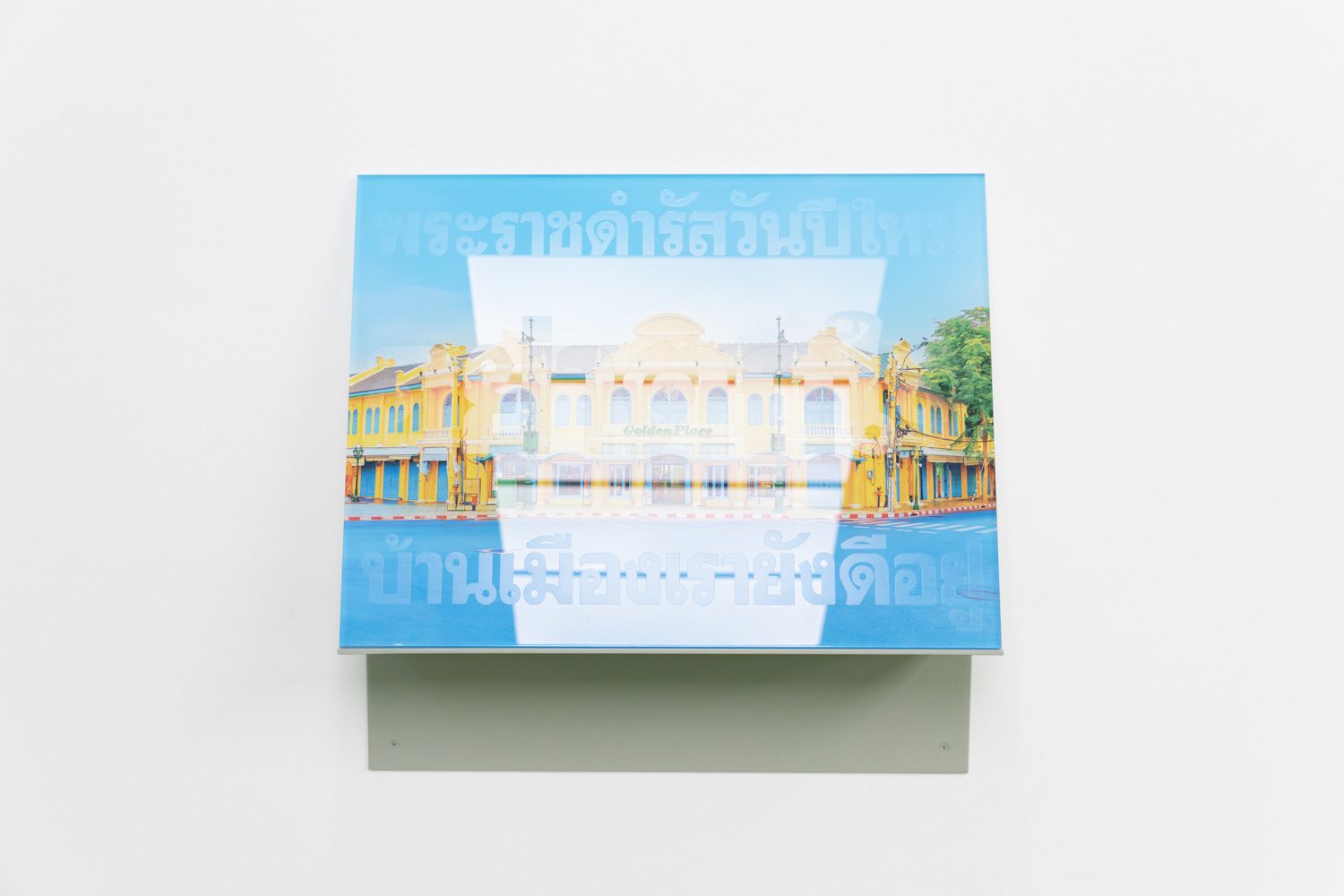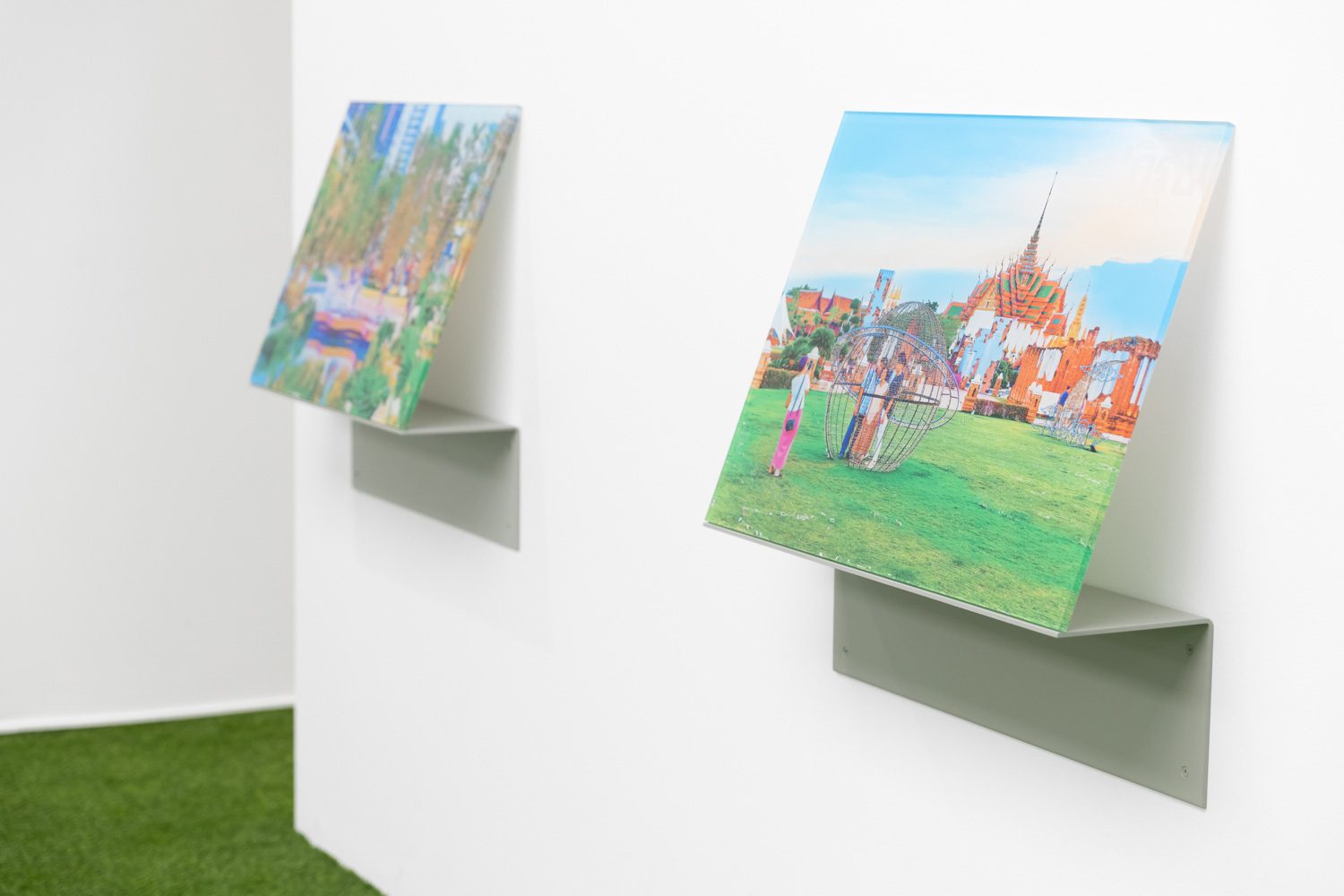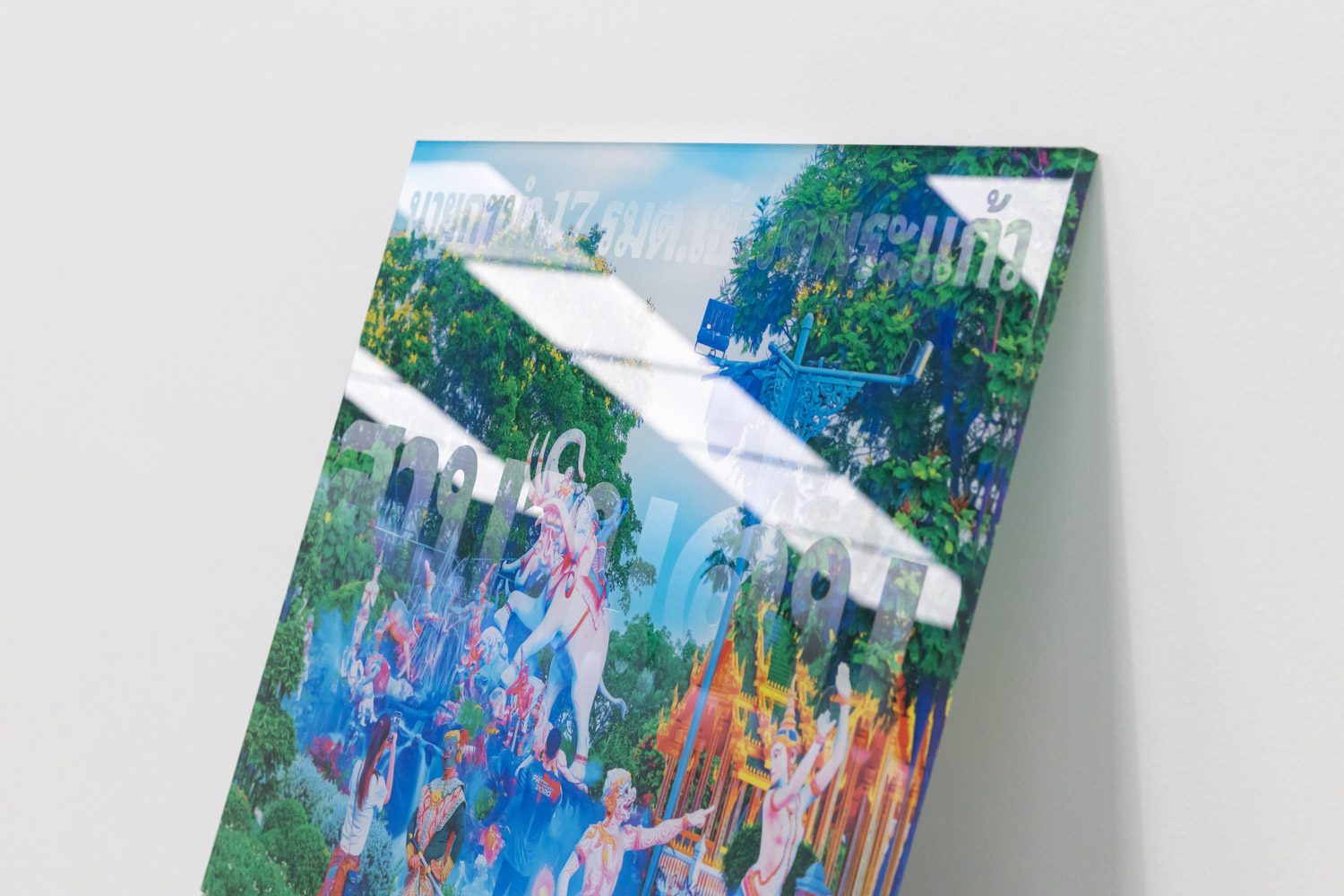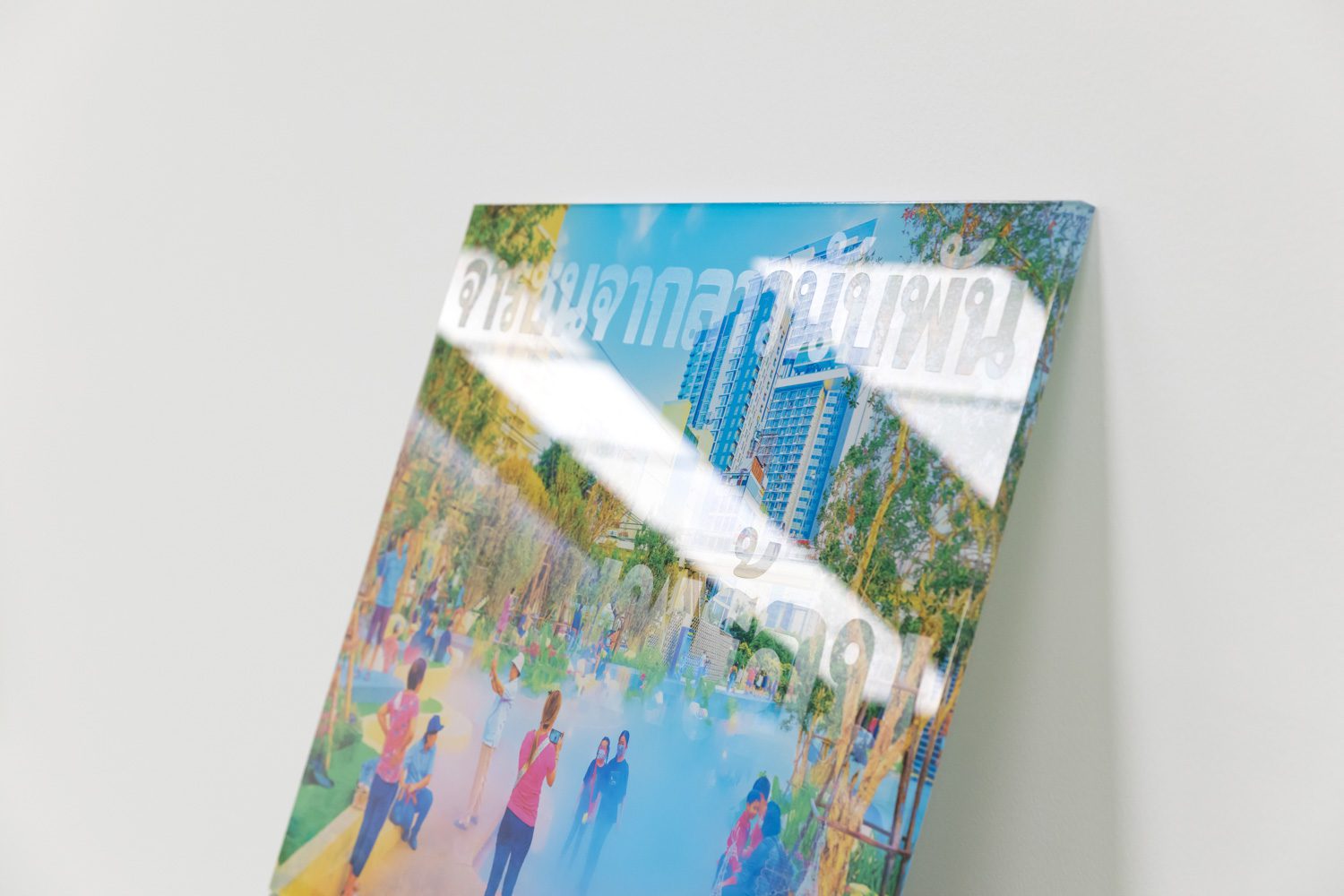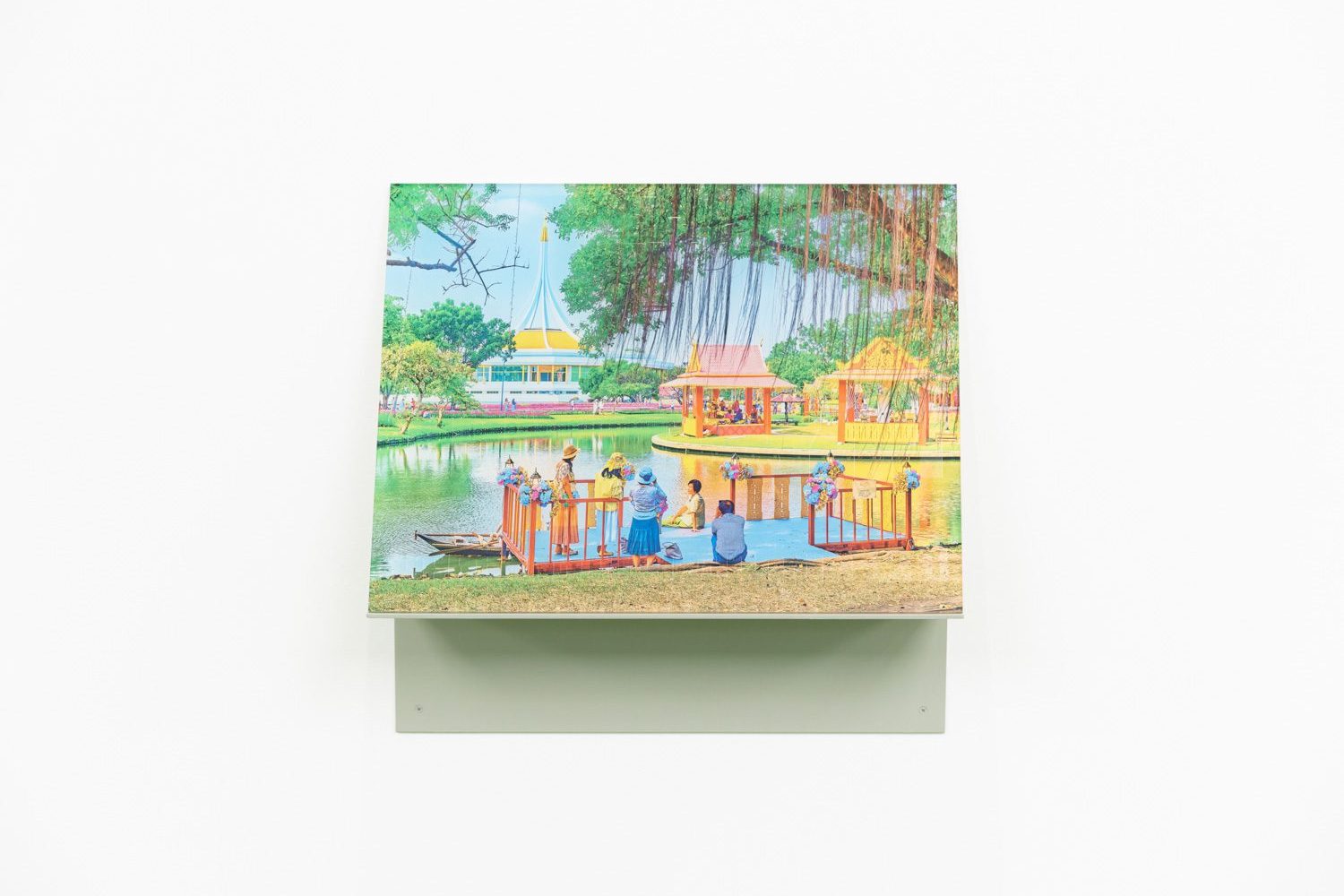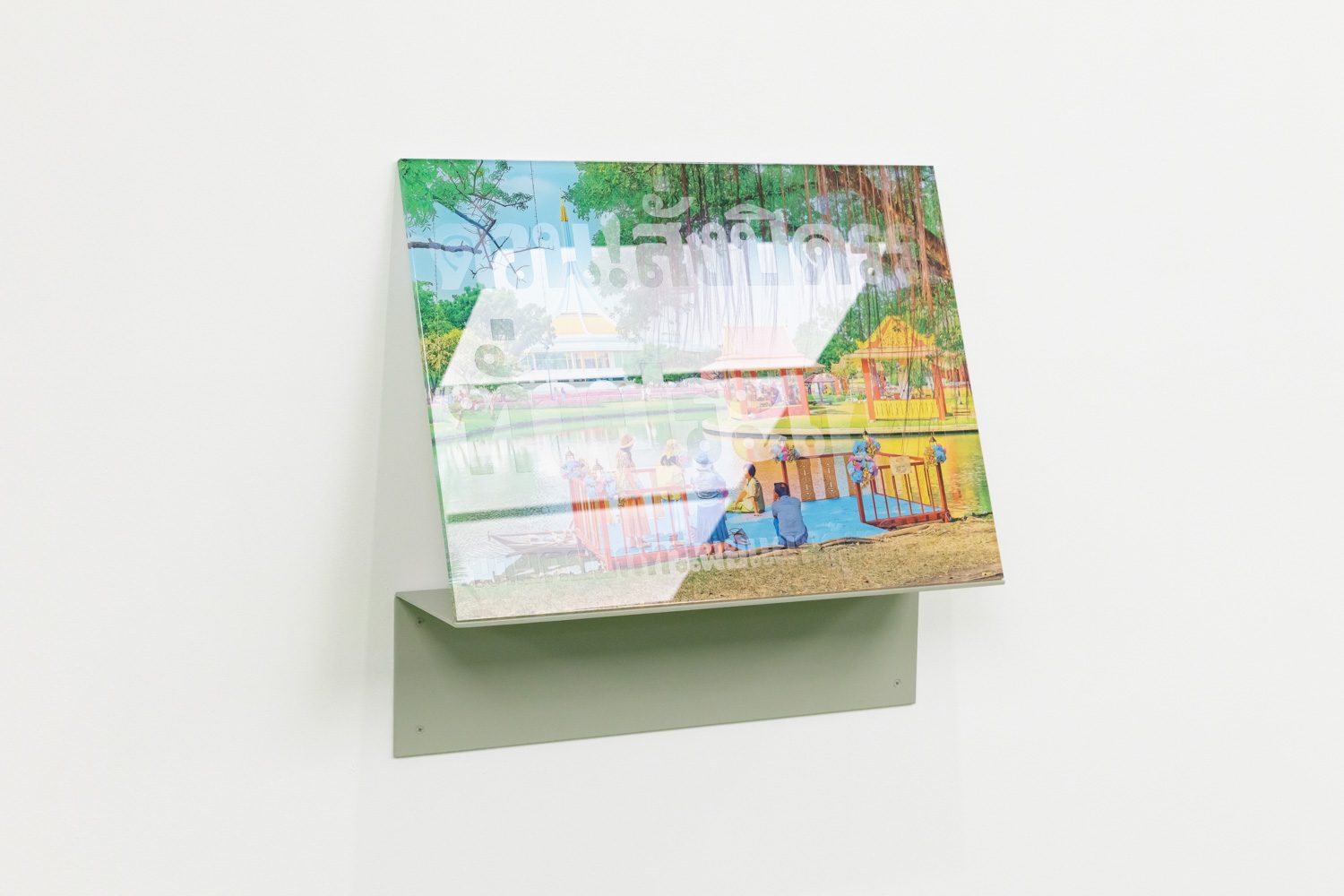
IN THE ROOM WITH THE ILLUSIONARY SCENERY OF GREEN GRASS THRIVING UNDER THE SCORCHING SUN, THE PHOTO EXHIBITION HIGHLIGHTS HOW THE IMAGE OF THAILAND IS AND WAS CONSTRUCTED
TEXT: WARUT DUANGKAEWKART
PHOTO: KETSIREE WONGWAN
(For Thai, press here)
The contrasting green grass-covered floor and clean white walls, the bright lighting and vibrant colors of the photographs, electrical cords rolled up on the floor with a lightbox facing the wall—all of these objects are part of ‘UNDER THE BURNING SUN THE GRASS IS GREENER THAN EVER,’ an exhibition by Lek Kiatsirikajorn, which has Kritsada Duchsadeevanich as the curator. On the surface, what is visible to the eyes appears to be nothing more than what it seems. But if we were to take into account the name of the exhibition, all of the details would somehow become clearer and more meaningful. Under the scorching heat of the sun, the grass seems to be thriving rather than wilting. It feels like an illusion—a fake, fabricated beauty.
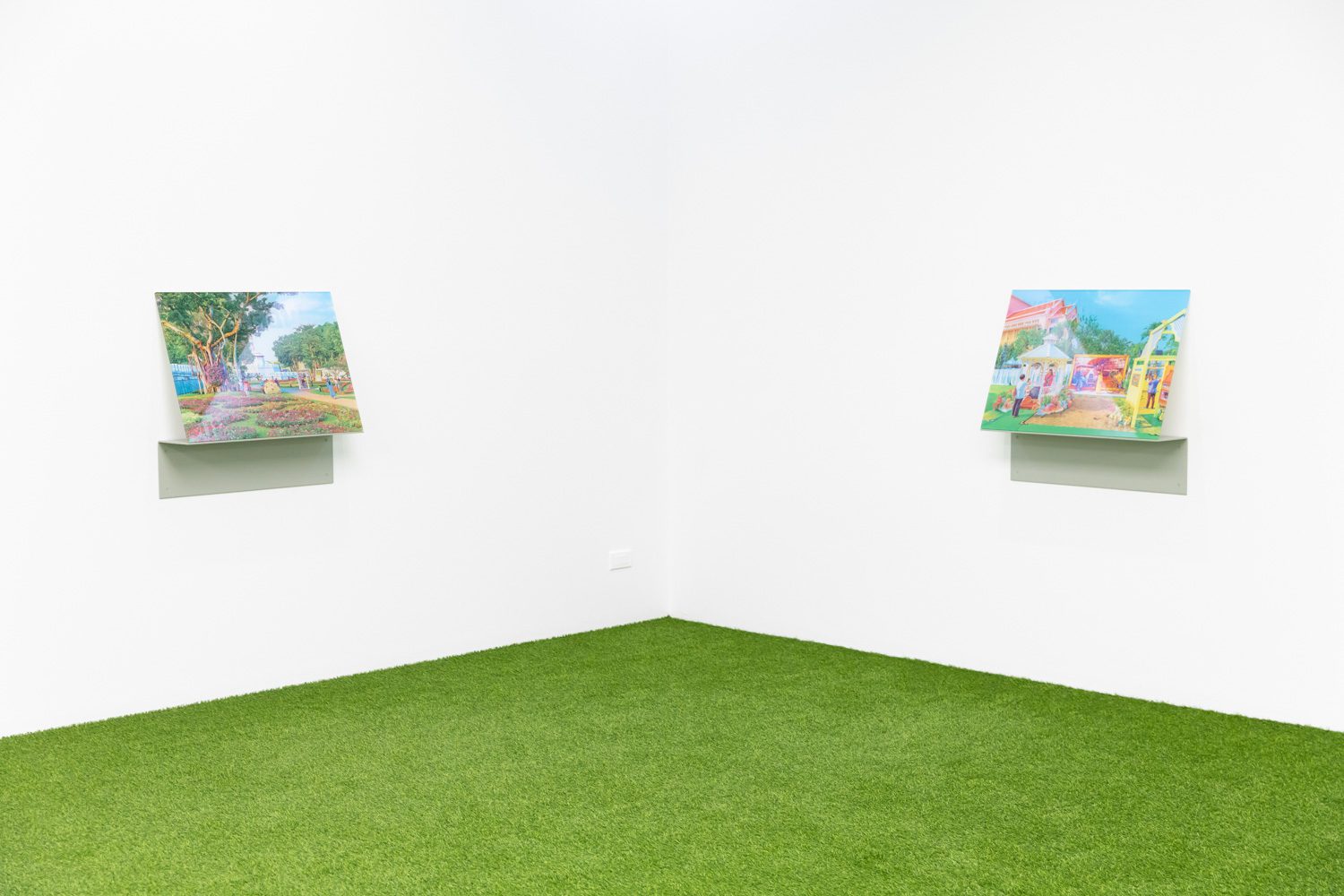
Lek Kiatsirikajorn is a photographer and artist whose extensive body of work includes photographic series that have been showcased both in Thailand and internationally. One of his most globally recognized works is the ‘Lost in Paradise’ series, which records the stories of rural Thai workers forced to leave their hometowns to work in Bangkok. The majority of his images are about social issues, the experiences of individuals from all walks of life, and all the circumstances and scenarios that surround them. While his primary tool is photography, in this exhibition, he devised the medium and presented the works from a more artistic standpoint, allowing images to be interpreted and experienced in a novel manner.
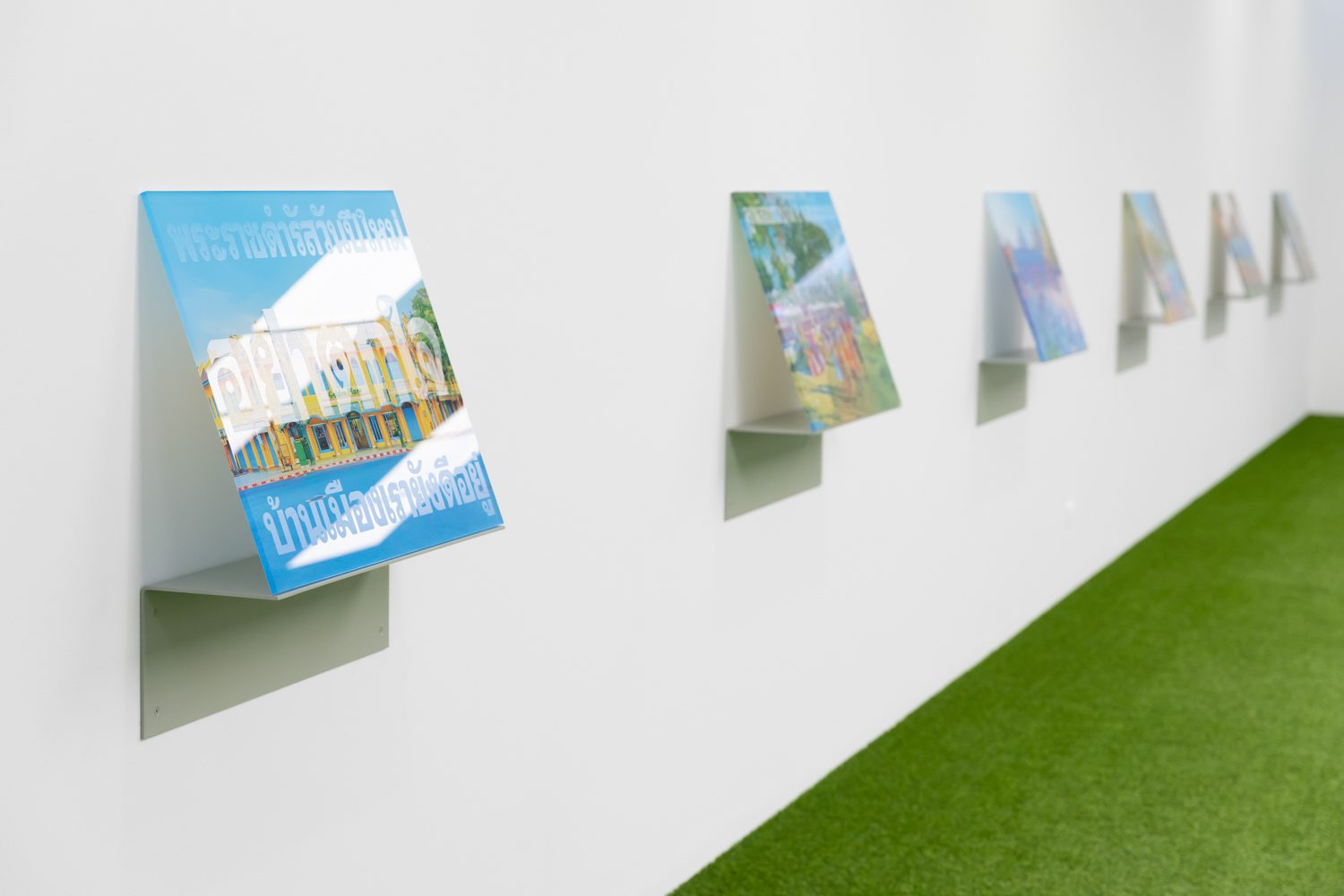
The story of the show is divided into two parts but told concurrently. The first portion comprises photographs of various current settings and scenarios, capturing locations and events funded and organized by public and private organizations to replicate traditional ceremonies and festivities. The second zone features texts from newspaper headlines from the year 1976, a watershed moment in Thai political history. The two storylines are only loosely linked, allowing viewers to piece together fragments from two separate historical periods.

Tourism promotional campaigns in the past promoted Thailand’s tourist destinations and culture in the form of postcards featuring images of locations and cultures, with the goal of promoting a favorable image and attracting travelers from all over the world to Thailand. Lek Kiatsirikajorn deliberately captures and presents images of events and scenarios that depict the glorified values of the country’s traditions and cultures, from visual elements such as vivid colors, as well as the promotional purpose behind them, by alluding to the aesthetics of this type of old postcard that portrayed an idyllic and exotic image of Thailand known superficially through the eyes of outsiders. Nonetheless, while an attempt was made to promote a specific impression of Thailand, it was a far cry from reality and the incidents that had occurred in the country at the time.
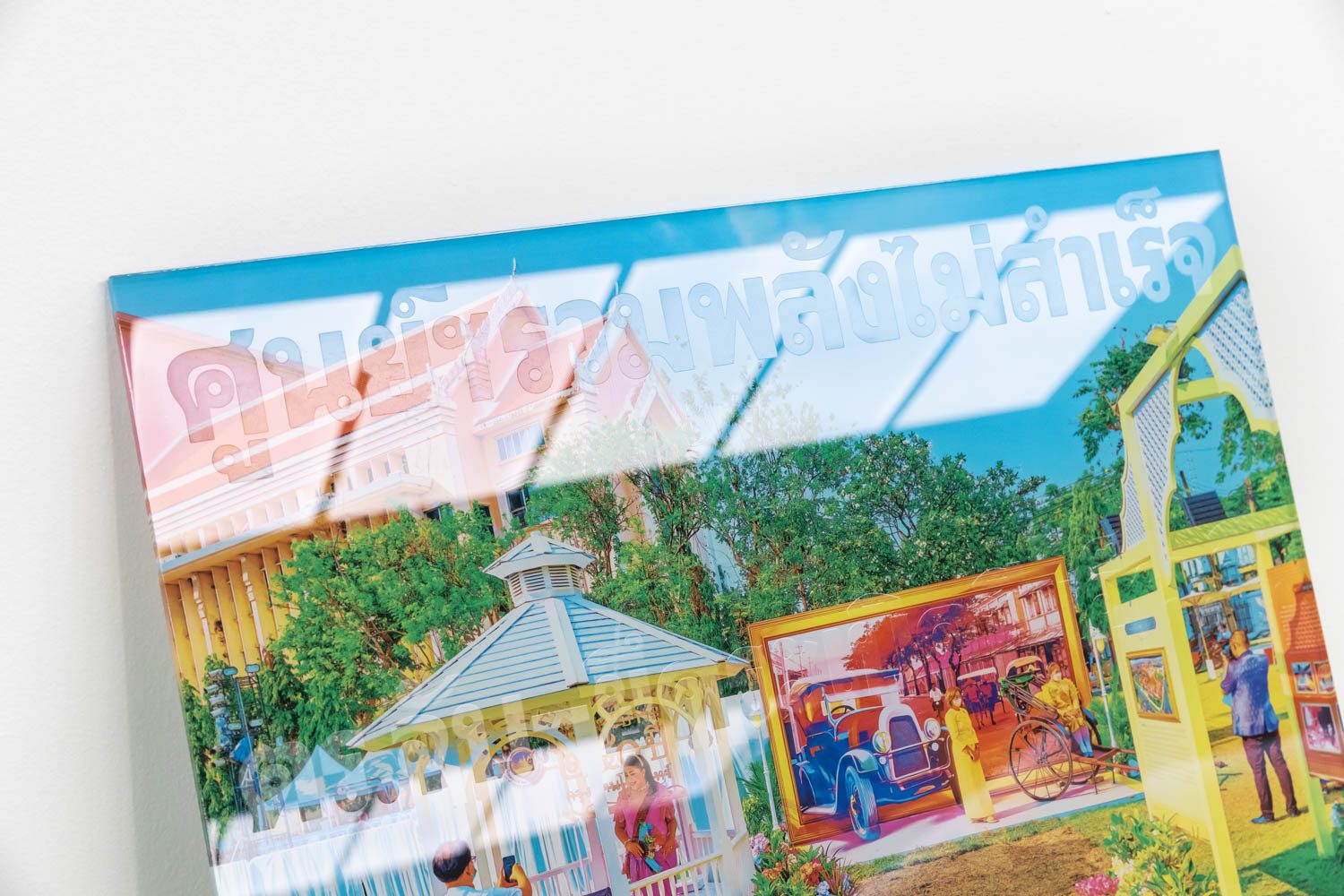
‘100,000 Village Scouts Rally Against Opponents of “Burden of the Land” Song, Accusing Them of Having a Guilty Conscience.’
‘Hundreds of Cops Surround Sanam Luang Amid Fears of Malicious Incidents. MP’s Nephew Nabbed with a Grenade!’
‘Breaking! Nationwide School Closure Order Issued. PM Unveils Ambitious 12-Year Recovery Plan in National Live Broadcast’
‘PM and 17 Ministers Vow Innocence at Grand Palace, Swear on Lives in Corruption Probe ‘
‘Nationwide School Re-openings. Normalcy Restored. Students Urged to Make Amends and Start Fresh’
These are just a few of the newspaper headlines discovered by Lek Kiatsirikajorn during his meticulous research on what happened in 1976. It is the artist’s attempt to resurrect stories that have been altered or even erased. These instances, in addition to the headlines, possess details, which are further elaborated in the exhibition’s pamphlet; all are real events that took place in Thailand and are part of the country’s history. The headlines are displayed in the form of lettering printed on acrylic panels that are put in front of the photographs, resulting in a double exposure effect. Every piece is displayed as a work of art, erected at an angle that requires viewers to stand over it and read, much like a newspaper placed on a stand in a library. Instead of a straightforward presentation, as the majority of photographs are, these works are installed to generate different perspectives. Having experienced the work in person, there are some angles that can only be seen from a distance. Walking towards the works from different directions, the light and shadow cast on each piece reveal hidden messages, symbolizing the parallel incidents that took place at different time periods.
Aside from the 16 images, one work is displayed in a distinctly unique manner. It’s an image of a tamarind tree, which, according to the artist’s research, could be the same tree where the horrifying ‘chair incident’ occurred on October 6th, 1976. The picture is the only one in the exhibition in which the artist uses the most realistic colors. The image is also accompanied by a caption written by an Associated Press photographer who observed and photographed that gruesome moment in Thailand’s modern history.


The artist takes the installation art approach with one of the key pieces of the exhibition: a photograph of the Grand Palace is arranged to face the wall, with the rear of the stainless steel light box in which the image is framed confronting the audience. The lightbox is linked to a 241-meter-long electrical court, representing the number of years in the Rattanakosin Era. The piece can be viewed from a variety of perspectives, allowing for more diverse and broad viewer interpretations.

The photographs in this exhibition are presented as art pieces that invite the viewer to experience and interpret them. Multiple ways in which one receives and perceives information, as well as the beauty that emerges from the paralleling stories and echoes of different time periods, are depicted from the artist’s ideas and point of view. It appears that the superimposition of fantasy on its opposite reality, whether in the past, present, or future, continues to move, but towards the same beginning. Everything feels reversed, repeated, layered, and ambiguous, to the point where the ending seems so precarious and far-fetched.
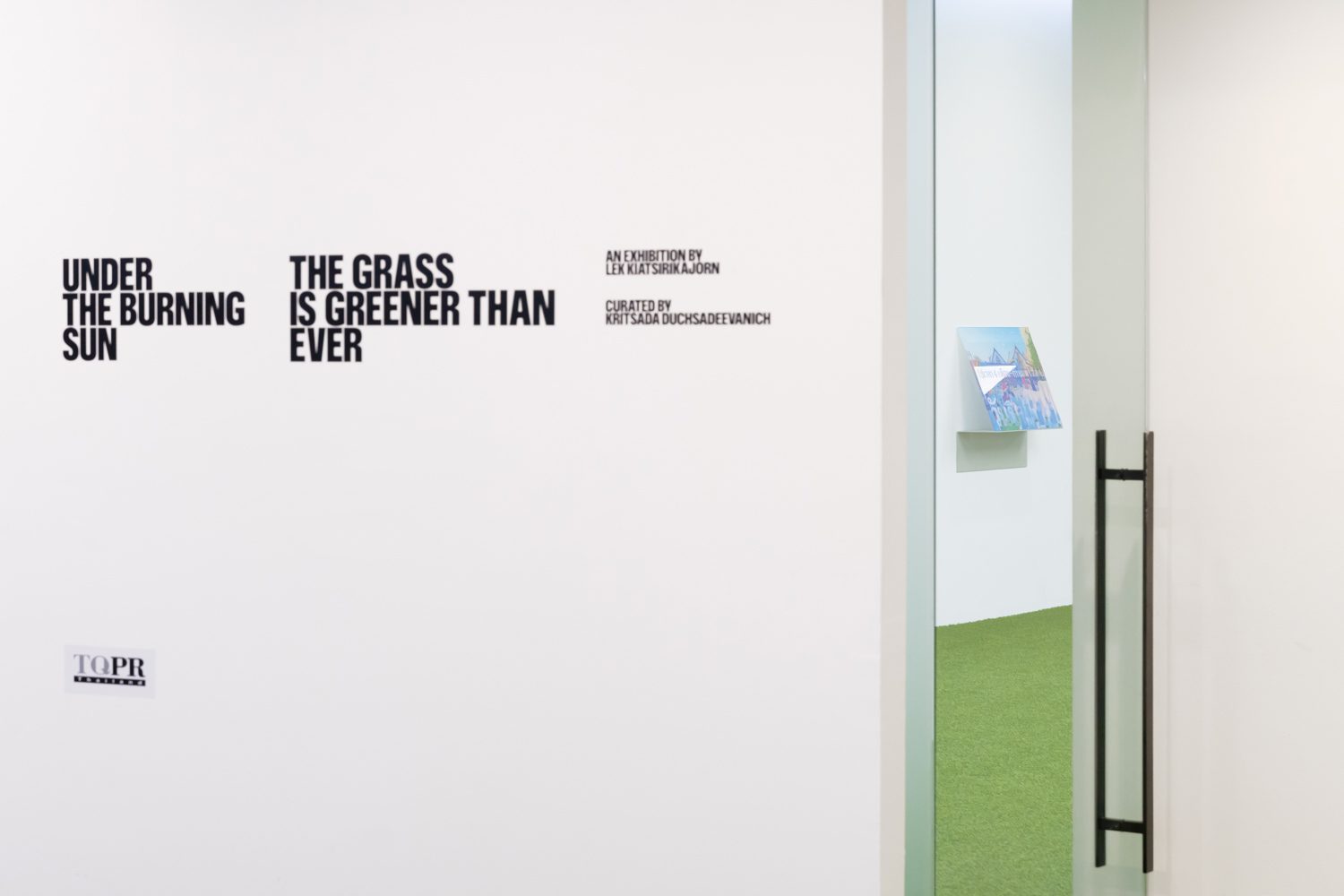
UNDER THE BURNING SUN THE GRASS IS GREENER THAN EVER is now showing at HOP Hub of Photography, 3rd Floor, MUNx2 Zone, Seacon Square Srinakarin Shopping Mall, from July 8th to September 3rd, 2023. A guided tour by the artist is available on Sunday, August 27th, 2023 (13.00–14.30) and Sunday, September 3rd, 2023 (13.00–14.30).

